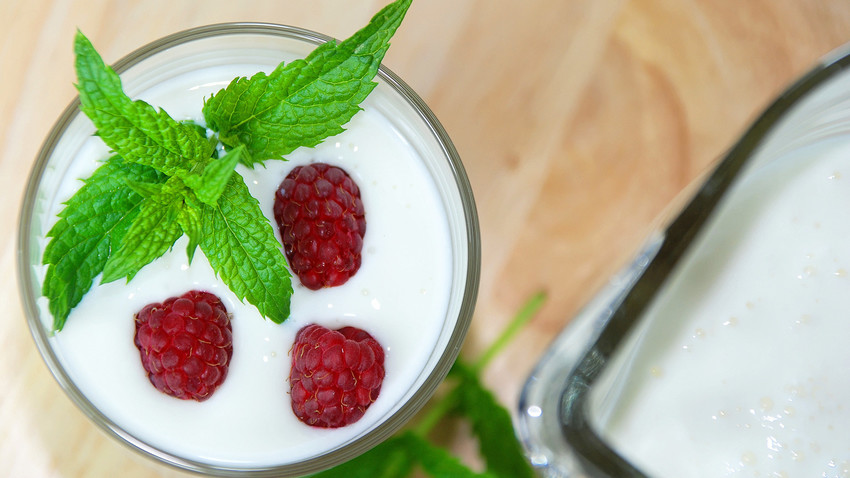Kefir: A healthy and mildly alcoholic drink for kids and adults

Kefir is a refreshing drink with a sour and slightly bitter taste.
Getty ImagesKefir, a fermented milk drink made with certain `grains’ that are comprised of bacteria and yeast, is very popular in Russia with both kids and adults. Kindergartens and hospital menus offer it, and anyone who wants to lose weight or recover from a hangover is also eager to drink it.
While kefir has a sour and slightly bitter taste, the drink is refreshing and healthy. Milk from cows, goats or sheep can be used to prepare it. While few Russians can tell you the names of all of the ‘grains’ and precisely how kefir is produced, everyone is proud of this national drink.
Kefir originated in the Caucasus Mountain region, where it was made in goatskin bags that hung near a doorway. Anyone passing through would hit it and help keep the milk and kefir grains well mixed. Kefir varies depending on its age, and specialists look at various criteria - different acidity, carbon dioxide levels and even alcohol (about 0.2-0.6 percent).
The first official mention of kefir is found in a report of the Caucasian Medical Society dating from 1867. One of

Kefir helps to burn fat.
Legion Media/Legion MediaThe recipe for kefir was long kept secret, but the Imperial family and the Russian aristocracy often visited the region. In the 19th century the famous entrepreneur, Nikolai Blandov, received a request from the Russian Society of Physicians to produce kefir in bulk. At this time kefir grains were sent from the Caucasus region to Moscow, and mass production of the drink began.
Genuine kefir should not be
In Russia, kefir is included in the diet of children from six months. Kefir prevents the development of pathogenic flora in the
The usefulness of kefir doesn’t prevent people from using it to enhance the taste of all kinds of dishes, and according to
Finally, kefir can be widely used in cosmetology, for masks and gels.
Quick and easy recipes with kefir
- Kefir with cinnamon helps to burn fat - just add a pinch of cinnamon in a glass of kefir. You can also add honey or grated ginger.
- Kefir with an apple at night is a great recipe to boost your immune system. Rub a fresh apple on a medium grater and add a glass of kefir. Add honey if you wish.
- Kefir with seeds of flax in the evening helps the digestive system, stabilizes the liver and improves blood circulation. 1 teaspoon of ground flax seeds for a glass of kefir.
If using any of Russia Beyond's content, partly or in full, always provide an active hyperlink to the original material.
Subscribe
to our newsletter!
Get the week's best stories straight to your inbox